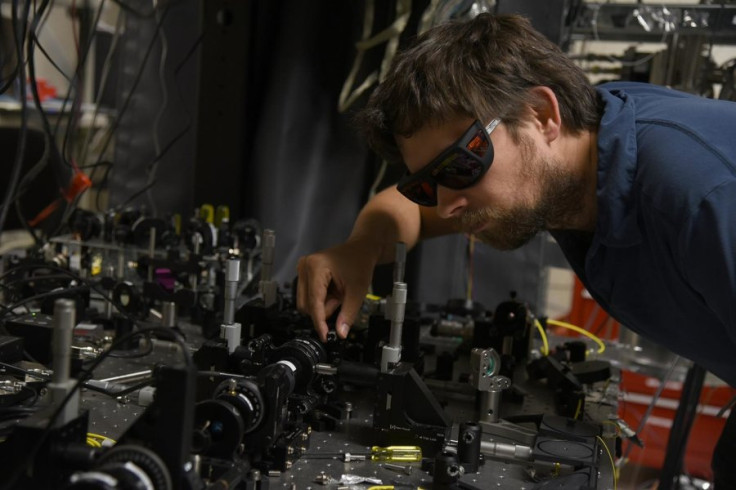Bell tests: Nist experiment demonstrates 'spooky' action at distance proving Einstein wrong

Pairs of identical particles sent off in different directions stay in "spooky" connection, with measurements showing a correlation that goes beyond local, pre-existing conditions. This was demonstrated by researchers at the National Institute of Standards and Technology and is yet another proof of quantum entanglement which Einstein found hard to accept.
By eliminating all other known options that can give the same results, especially three major "loopholes" that have plagued earlier Bell experiments, the National Institute of Standards and Technology (Nist) conclusion claims to be definitive and confirms what quantum theory predicts.
Entangled quantum particles are a phenomenon where two particles, once associated, retain the flavours of that association even after separation, across vast spaces. In other words, they seem to share a single existence, which in quantum mechanics is defined by the wave function.
Theory says that a small tweak on one particle will produce instantaneously a corresponding change in the other, even if they are at two ends of the galaxy. This violates the theory of relativity, according to which the speed of light is an absolute limit on how fast any information can travel.
Einstein could not accept this and proposed that the pair is not in a superposition state or two places at once but exists in a "true" or "real" location, but people just could not see it. The Nist results were obtained using ultrafast single-photon detectors, which can accurately detect at least 90% of extremely weak signals, and new tools for randomly picking detector settings.
"You can't prove quantum mechanics, but local realism, or hidden local action, is incompatible with our experiment," NIST's Krister Shalm said. "Our results agree with what quantum mechanics predicts about the spooky actions shared by entangled particles."
Experiment procedure
Photon pairs are created in a process where a laser beam stimulates a crystal. The pairs, which are highly correlated in their polarisations, are separated and sent by fiber optic cable to detectors in distant rooms. The pairs were detected simultaneously -- around 6,378 times out of the total 12,127 events -- over a period of 30 minutes.
Researchers calculated that the maximum chance of local action producing such results was just 0.0000000059, or about 1 in 170 million. Another team at the University of Vienna in Austria that used a similar high-efficiency single-photon detector provided by Nist, achieved similar results.
The experiment also showed that there was no breaching of light speed by any communication between the detectors, with the two detectors measuring entangled photons a few hundreds of nanoseconds apart. Information travelling at the speed of light would require 617 nanoseconds to travel between the detectors.
By virtue of their behaviour as one entity, the entangled photons offer possibilities in the world of security and spying. The instantaneous reaction property can help increase the power and speed of computations.
© Copyright IBTimes 2024. All rights reserved.





